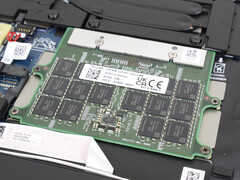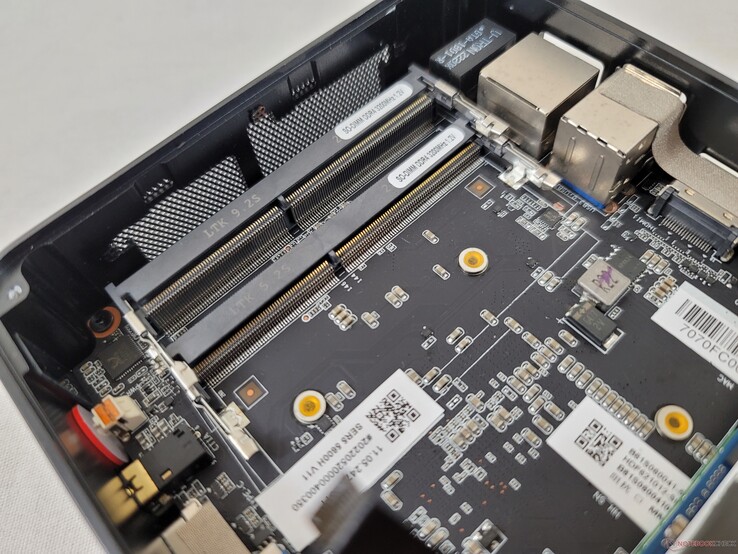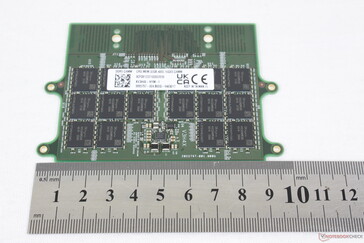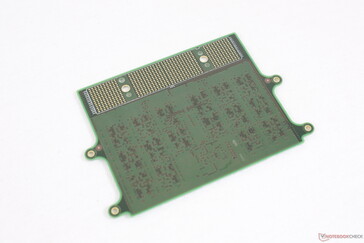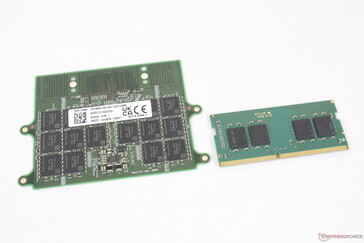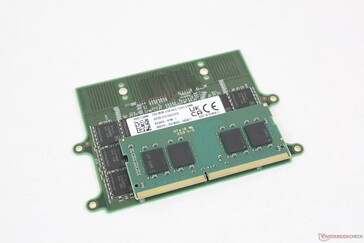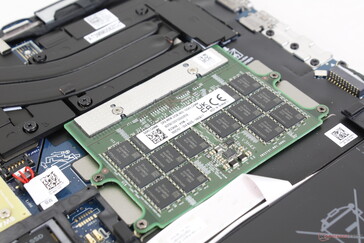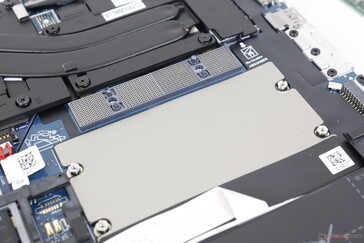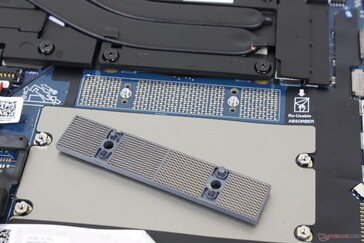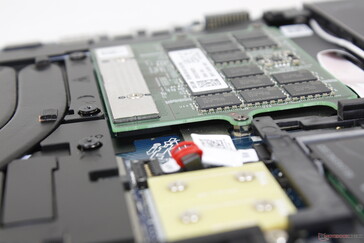It was revealed through leaks earlier this year that Dell have been developing the next generation of DDR memory for several years called Compression Attached Memory Module (CAMM) to replace SODIMM on laptops. Initial reports claimed it to be a proprietary solution that Dell wanted to push to consumers and OEMs for those lucrative royalty fees, but there’s more to the story than that. Dell have sent us the first commercial product sporting CAMM for review – the Precision 7670 – and have also clarified for us their intentions with CAMM and their reasons for developing the technology in the first place.
What’s wrong with SODIMM?
The tried-and-true SODIMM standard is over two decades old at this point and we’re beginning to reach its limits. More specifically, RAM speeds greater than 6400 MT/s are not possible with the current standard. This ceiling is becoming a problem on very high-end laptops and workstations while most consumer-level laptops have yet to reach the limit. Naturally, more laptops will hit the ceiling in the years to come as RAM speeds become faster and faster.
It’s worth noting that CAMM utilizes the same DRAM ICs as found on SODIMM modules but with a different interface to the PCB. Thus, it is this interface that makes CAMM special and the heart of the patents under Dell.
What are the main advantages of CAMM?
CAMM was designed specifically to overcome the aforementioned performance limits of SODIMM while reducing both Z height and routing traces on the PCB to ultimately allow for laptops with both faster RAM and thinner profiles. The Z height savings have obvious implications when it comes to size and cooling, but the reduced footprint on the PCB underneath the CAMM module also saves valuable space for other motherboard components. For example, it may be possible to squeeze in an M.2 1216 WLAN module in between the CAMM module and PCB whereas this is currently impossible with SODIMM.
CAMM is also scalable from quad-channel to dual-channel or single-channel if needed to reach different price targets. ECC support is planned.
How big are the CAMM modules?
This is where it gets tricky. Unlike SODIMM modules, CAMM modules will be different in size depending on the RAM capacity. For example, two 16 GB SODIMM modules are the same size as two 8 GB SODIMM modules, but one 32 GB CAMM module may be longer or wider than one 16 GB CAMM module. For reference, the 128 GB module in our Precision unit is roughly 9.8 x 6.8 cm in size. As for other capacities, Dell says their specific dimensions have yet to be determined as the CAMM design standards are still a work in progress.
Won’t the size differences between CAMM capacities be a problem for upgrades?
They can be. Though CAMM is shorter in Z, it can be larger in X and Y when compared to SODIMM depending on the capacity. It may therefore not be possible to upgrade a CAMM laptop from 16 GB to 32 GB or 64 GB if there is not enough space on the motherboard to support the physically larger CAMM modules. How much physical room is available to upgrade will likely depend on the laptop maker. In fact, OEMs will likely have to redesign entire motherboards around the new CAMM standard since current designs are so optimized around SODIMM; you can’t just swap out SODIMM for CAMM like you would for a yearly CPU update, for example.
Will heat be an issue?
Many desktop DIMM modules already have heat spreaders and Dell says this will be a likely scenario for laptop RAM as well in the near future especially for CAMM. Current speeds like on our Precision 7670 don’t require a heat spreader, but this may change on future models when faster CAMM modules become available.
How do you upgrade CAMM modules on a laptop?
SODIMM modules are secured to the PCB via clamps on either end while CAMM modules are secured by six Philips screws. The pins of the CAMM module make contact with the gray interconnect between the PCB and CAMM as shown by the images below.
Dell says there will only be one CAMM module connection per motherboard whereas laptops utilizing SODIMM can have up to four. This will pose a challenge to end-user upgrades as the original CAMM module would have to be removed completely when upgrading. For example, a laptop with two SODIMM slots and one 8 GB RAM module can be upgraded to 16 GB by simply adding a second 8 GB module. On a CAMM laptop, however, the original 8 GB CAMM module must be replaced completely with a 16 GB CAMM module.
How much will CAMM modules cost?
Newer technologies almost always have higher initial costs than the previous standard they are replacing. M.2 PCIe SSDs, for example, were much more expensive than 2.5-inch SATA SSDs at launch before prices evened out. With that said, Dell says CAMM modules at this point in time cost $1 more per GB to produce than standard SODIMM modules.
Will there be a CAMM to SODIMM adapter?
Dell plans to make available CAMM to SODIMM adapters at least initially for Precision users who aren't yet ready to make the jump to CAMM. Of course, the adapters would suffer the same performance limits as SODIMM.
Our opinion on CAMM
CAMM directly addresses three major shortcomings of SODIMM: the thick profile, large PCB footprint, and limited performance. However, it also introduces three notable shortcomings of its own: different physical sizes to be aware of when upgrading, generally larger L x W dimensions when compared to a single SODIMM module, and costlier upgrades as there is only one CAMM module per laptop.
CAMM becomes less enticing for cheaper laptops where RAM performance doesn’t matter as much. In this scenario, the laptop maker may decide that SODIMM would be good enough for the target audience especially since it is still cheaper to produce. If CAMM were to proliferate, it will most likely occupy the upper midrange to high-end laptop market while leaving the budget range to SODIMM or even soldered LPDDR.
The future of CAMM will depend on whether or not JEDEC and other OEMs decide to stadardize the technology. If so, then CAMM can become as ubiquitous as M.2 SSDs and Dell would profit from its CAMM patents. If not, then there’s a chance that the technology will be swept under the rug much like the Dell DGFF. Dell has at least one member in the JEDEC standards committee, however, plus the backing of Intel for the continuing development of CAMM. It’s looking good for them so far, but it’ll likely be a few years before anything comes to fruition. Until then, Dell will continue to deploy CAMM on a select few of its own laptops like the current Precision 7670 to prove its benefits.




